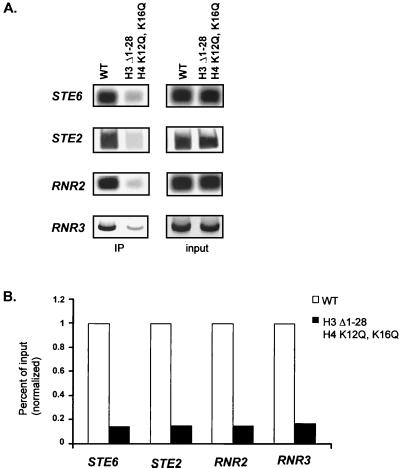FIG. 5.
Histone mutations severely cripple the association of Tup1 with target loci. (A) Quantitative PCR products from chromatin immunoprecipitations (IP) preformed on cell extracts from wild-type (WT) (MSY590) and H3 Δ1–28 H4 K12QK16Q (MSY 577) strains by using an antibody against Tup1. PCR primer sets correspond to −0.2 kb for STE6 (as in Fig. 1A), −0.3 kb for STE2 (as in Fig. 1B), −0.4 kb for RNR2 (as in Fig. 2A), and −0.4 kb for RNR3 (as in Fig. 2B). (B) Bar graph representing the percentage of input DNA immunoprecipitated from MSY590 and MSY577 extracts. The wild-type value was set at 1 to allow comparison between genes. For the graph, four independent experiments were averaged. The standard deviation of the MSY590/MSY577 ratios was less than 0.01. Note that for each gene, the reductions in immunoprecipitation efficiency were almost identical.

